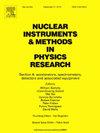Completeness of the number of quasars surrounding quasar 0851+20 as a sample for detecting cosmic voids
IF 1.5
3区 物理与天体物理
Q3 INSTRUMENTS & INSTRUMENTATION
Nuclear Instruments & Methods in Physics Research Section A-accelerators Spectrometers Detectors and Associated Equipment
Pub Date : 2025-01-30
DOI:10.1016/j.nima.2025.170264
引用次数: 0
Abstract
The distribution of quasars is quite a good indicator for studying the structure of the universe. The distribution of quasars around quasar 0851 + 20 gives grounds for asserting that if the number of quasars is complete and their distribution is homogeneous, then that part of the universe is homogeneous. In the distribution of extragalactic objects around quasar 0851 + 20, quasars show a more reliable result because quasars are more powerful sources and can be detected at greater distances. And the number of quasars found at certain distances is complete. With the help of this fact, it can be said that the distribution of quasars at these distances better reveals the structure of the universe. The work presents results that reveal the inhomogeneity of the structure of the Universe.
求助全文
约1分钟内获得全文
求助全文
来源期刊
CiteScore
3.20
自引率
21.40%
发文量
787
审稿时长
1 months
期刊介绍:
Section A of Nuclear Instruments and Methods in Physics Research publishes papers on design, manufacturing and performance of scientific instruments with an emphasis on large scale facilities. This includes the development of particle accelerators, ion sources, beam transport systems and target arrangements as well as the use of secondary phenomena such as synchrotron radiation and free electron lasers. It also includes all types of instrumentation for the detection and spectrometry of radiations from high energy processes and nuclear decays, as well as instrumentation for experiments at nuclear reactors. Specialized electronics for nuclear and other types of spectrometry as well as computerization of measurements and control systems in this area also find their place in the A section.
Theoretical as well as experimental papers are accepted.

 求助内容:
求助内容: 应助结果提醒方式:
应助结果提醒方式:


